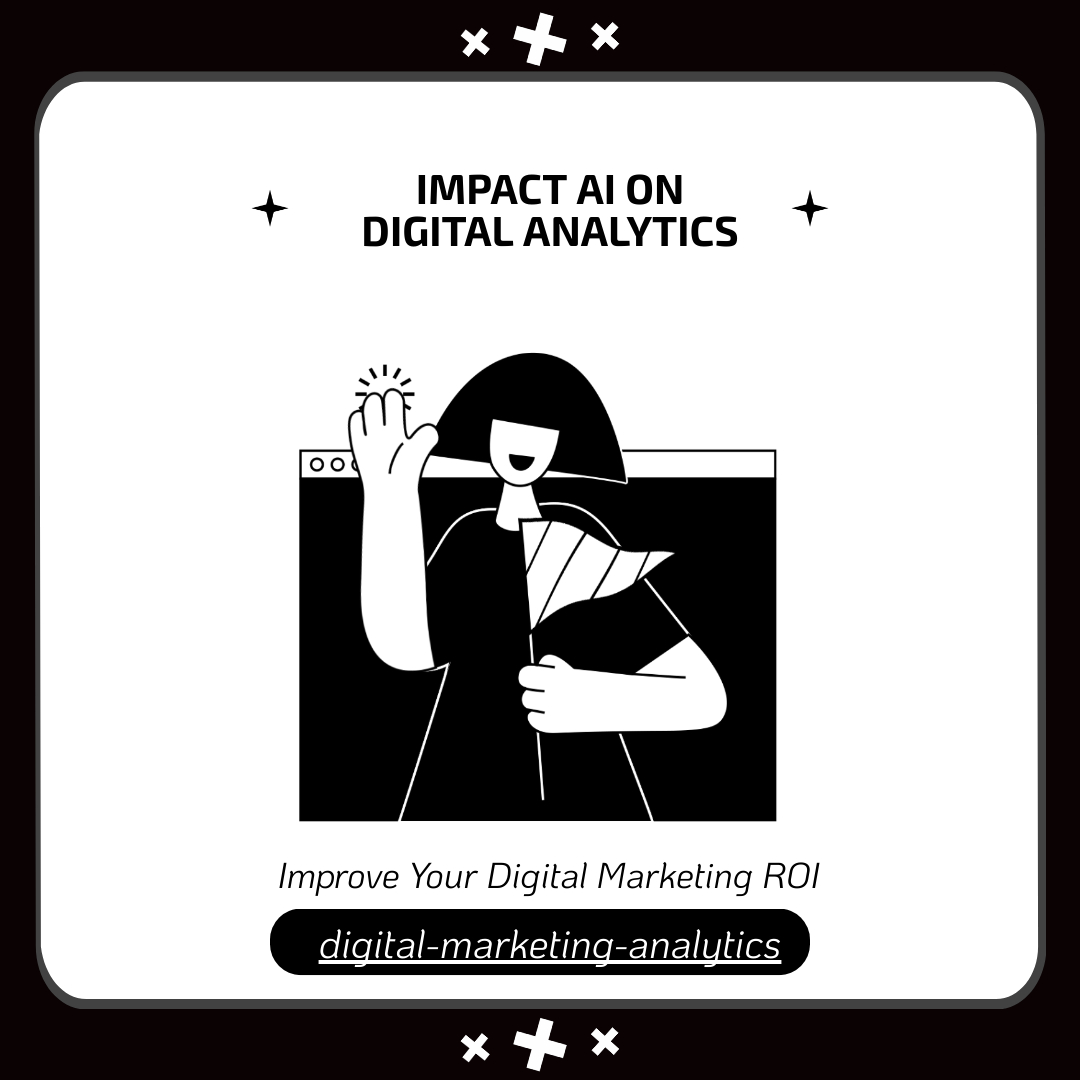In today’s hyper-connected digital economy, data isn’t just valuable—it’s essential. Every click, scroll, search, and purchase generates actionable insights. But the speed and scale of this data far exceed what traditional analytics can handle. That’s where Artificial Intelligence (AI) transforms the game.
From real-time insights to predictive modeling, AI in digital analytics is revolutionizing how businesses collect, analyze, and act on data. Let’s explore how this shift is reshaping digital strategies and driving smarter decisions.
What is AI in Digital Analytics?
Artificial Intelligence in digital analytics refers to the use of machine learning, automation, and algorithms to analyze complex data sets, identify patterns, and generate insights automatically. Instead of manual number crunching, AI empowers marketers, analysts, and business leaders to understand performance faster—and predict what’s next.
Key Benefits of AI-Powered Digital Analytics
1. Real-Time Data Processing at Scale
AI-powered analytics tools can process massive volumes of digital data in real time—far beyond human capability. This enables brands to monitor:
Instead of waiting for monthly reports, businesses get instant insights to optimize content, fix friction points, and improve campaign performance on the fly.
2. Predictive Analytics for Smarter Decision-Making
With machine learning in data analysis, AI tools can uncover trends and patterns across historical data to forecast:
For instance, eCommerce platforms use predictive analytics tools to optimize inventory, personalize offers, and reduce marketing waste.
3. Hyper-Personalization Across Channels
AI helps businesses deliver personalized customer experiences at scale by analyzing:
-
Browsing habits
-
Purchase history
-
Demographics
-
Engagement patterns
This enables brands to serve product recommendations, dynamic content, and personalized emails—driving higher engagement, loyalty, and conversion rates.
4. Anomaly Detection and Issue Prevention
AI excels at identifying unusual patterns or anomalies in datasets. Whether it's a spike in bounce rates or fraudulent behavior, AI anomaly detection tools can alert teams in real-time—before issues escalate.
Common use cases include:
5. Natural Language Processing (NLP) for Customer Insights
AI-powered Natural Language Processing (NLP) tools extract insights from unstructured sources like:
-
Product reviews
-
Social media comments
-
Chatbot logs
-
Support transcripts
This helps companies analyze customer sentiment, identify product issues, and make data-driven UX improvements—turning qualitative feedback into actionable insights.
6. Automated Reporting and Dashboards
Manual reporting is time-consuming and error-prone. AI simplifies reporting by:
-
Aggregating data from multiple sources
-
Generating interactive dashboards
-
Highlighting anomalies automatically
-
Delivering key KPIs to stakeholders instantly
This frees analysts to focus on strategy and insight—not spreadsheet formatting.
7. Continuous Learning and Adaptive Intelligence
Unlike static analytics models, AI systems learn and evolve. They refine their algorithms over time based on new data, user feedback, and campaign outcomes.
As the system adapts, your analytics becomes smarter, faster, and more accurate, helping you stay ahead of the competition.
8. Cost-Efficiency at Scale
While AI requires an upfront investment, it reduces long-term costs by:
-
Automating manual processes
-
Reducing the need for large analyst teams
-
Minimizing errors
-
Scaling without adding headcount
Companies leveraging AI in analytics often see faster ROI through smarter budgeting, targeting, and performance optimization.
Final Thoughts: Why AI is the Future of Digital Analytics
Artificial Intelligence isn’t just enhancing digital analytics—it’s redefining it. From real-time analysis to hyper-personalization and automation, AI empowers organizations to make smarter decisions, faster.
By embracing AI-driven analytics tools, businesses gain:
As data complexity grows, AI becomes not a luxury—but a necessity.
Ready to Harness the Power of AI?
At Marcitors, we help businesses implement AI-powered digital analytics solutions that deliver measurable results. From predictive modeling to automated reporting, we bring your data strategy into the future.
Explore Our Digital Analytics & Automation Services
Frequently Asked Questions
Q1. What is the role of AI in digital analytics?
AI enhances digital analytics by automating data processing, predicting future trends, detecting anomalies, and delivering personalized experiences—leading to more informed and faster decision-making.
Q2. How does predictive analytics help businesses?
Predictive analytics uses historical data and machine learning to forecast outcomes like customer behavior, sales trends, or churn, allowing businesses to optimize their strategies and plan proactively.
Q3. Can AI be used for sentiment analysis?
Yes, AI-powered NLP tools can analyze customer reviews, chats, and social media comments to extract sentiment insights, helping businesses improve customer experience and product development.
Q4. Is AI in analytics suitable for small businesses?
Absolutely. Many modern AI tools are affordable and scalable for small businesses, offering features like automated reports, predictive insights, and customer segmentation to enhance performance.
Q5. Which tools are best for AI analytics?
Top AI analytics tools include Google Analytics 4, IBM Watson Analytics, Tableau with Einstein AI, and NLP tools like MonkeyLearn or Lexalytics—each catering to different analytics needs.
 Social Media IntelligenceIncrease ROI by syncing offers with audience behavior trends
Social Media IntelligenceIncrease ROI by syncing offers with audience behavior trends Free ToolsExplore a wider suite of tools to enhance your workflow and unlock greater efficiency.
Free ToolsExplore a wider suite of tools to enhance your workflow and unlock greater efficiency. Schema Markup GeneratorSmarter optimization and faster visibility achieved with free SEO tools
Schema Markup GeneratorSmarter optimization and faster visibility achieved with free SEO tools SERP CheckerReal-Time SERP Checker for Smarter SEO Insights
SERP CheckerReal-Time SERP Checker for Smarter SEO Insights UTM BuilderFree UTM Builder for Smarter Campaign Tracking
UTM BuilderFree UTM Builder for Smarter Campaign Tracking


